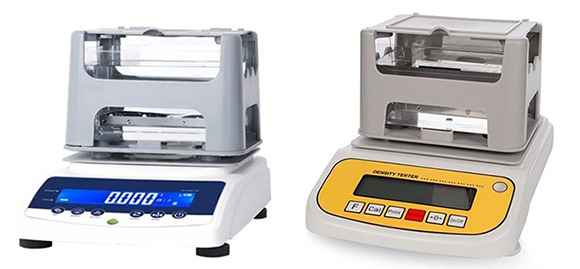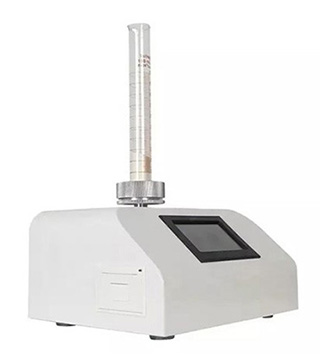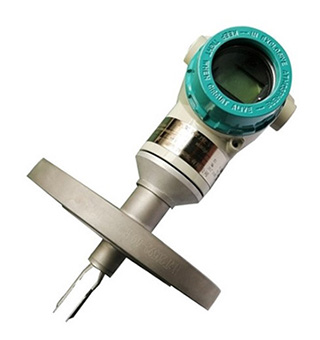What are the Types of Density Meters?
Density meter is an important instrument used to measure the mass per unit volume of a substance. It is widely used in petrochemical, food and beverage, pharmaceutical, metallurgy, material research and other fields. Due to different application scenarios and measurement objects, there are many types of density meters, which can easily confuse people when selecting. ATO will systematically classify density meters from three dimensions: usage scenarios, measurement media and working principles, and illustrate them with typical examples to help everyone quickly understand the characteristics and uses of various types of density meters.
Classification by usage scenarios
Depending on the application scenarios of density meters, density meters can be divided into desktop density meters and portable density meters.
Benchtop density meters
Desktop density meters are usually used in laboratories, quality inspection workshops or fixed workstations. They have stable structures, comprehensive functions, high measurement accuracy, and are often equipped with automatic temperature control systems and digital displays. Suitable for environments with high accuracy requirements and high frequency of use. For example: laboratory vibrating tube density meters, benchtop density meters for solid, pycnometer liquid density meters, etc., are widely used in research and development, quality control and other links.

Portable density meter
The portable density meter is small in size and light in weight, suitable for rapid measurement on site, in the field or beside the pipeline. Although the accuracy is slightly lower than that of desktop equipment, it is convenient and easy to operate, and is often used in process inspections, on-site sampling and analysis, etc. Typical products include handheld digital density meters, portable tuning fork density meters, etc., which are suitable for on-site detection needs in industries such as petroleum, brewing, chemicals, and environmental protection.

Classification by measurement medium
Depending on the different forms of the measured substances, density meters can be divided into solid density meters, liquid density meters, and gas density meters.
Liquid density meter
Liquid density meters are the most common type of density meters, which are specially used to measure the density of liquids such as water, oil, alcohol, chemical solutions, juice, and liquid medicine. They can achieve continuous measurement or intermittent sampling, with high accuracy and fast response. Common equipment includes vibrating liquid density meters, ultrasonic density meters, glass float meters, etc., which are widely used in food, pharmaceutical, petrochemical, papermaking and other industries.
Solid density meter
Solid density meters are used to measure the density of solid materials such as metals, plastics, ceramics, glass, rubber, and powders. Common methods include the drainage method of Archimedes' principle, the gas displacement method (such as helium specific gravity bottle), the tap density method, etc. Common equipment for solid density meters includes digital wood density meters, gold density meters, tap density meters, etc., which are used in applications such as material research and development, metallurgical analysis, and plastic quality control. They are important tools for judging the density and purity of materials.
Gas density meter
Gas density meters are used to measure the density of gases such as air, natural gas, nitrogen, and oxygen. They often obtain density data indirectly through vibration frequency, sound speed propagation, or pressure-volume relationship. Typical equipment includes vibrating tube gas density meters, ultrasonic gas analyzers, PVT measurement systems, etc., which are mainly used in natural gas pipelines, gas boilers, environmental testing, and scientific research experiments.
Classification by working principle
According to different working principles, density meters can be divided into static pressure type, vibration type, float type, and radioisotope type.
Static pressure density meter
The static pressure density meter calculates the density by measuring the relationship between the static pressure of the liquid and the liquid level height. This method has a simple structure and low cost, and is suitable for continuous density monitoring of liquids in tanks or pipelines. Commonly used in sewage treatment, drinking water plants, oil tank density monitoring and other occasions, the representative equipment is the differential pressure density transmitter.
Vibration density meter
The vibration density meter works based on the physical relationship between vibration frequency and density. After the measuring element (such as a U-tube or tuning fork) is filled with a sample, its vibration frequency will change with the density, and the equipment can calculate the density based on this. This type of density meter has high accuracy and fast response, and is currently the most widely used type, such as the DMA series, tuning fork density meter, etc.
Float density meter
The float density meter uses the principle of buoyancy to judge the density by observing the position of the float in the liquid or the change in buoyancy. It is a traditional density measurement method with a simple structure and easy use, especially suitable for primary detection that does not require high precision. Typical products include glass hydrometers, inductive float density meters, etc., which are often used for on-site initial inspections in industries such as wineries, chemicals, and oil products.
Radioisotope density meter
The radioactive density meter uses the energy attenuation of gamma rays after penetrating the material to determine the density. It is suitable for special environments such as high temperature, high pressure, and strong corrosion, and does not require direct contact with the measured medium. Typical applications include slurry transportation, mud drilling, crude oil pipelines, etc. It is an ideal solution for non-contact online density monitoring.
Density is a key parameter in many industrial and scientific research fields, and is widely used in liquid mixing, material research and development, process control, quality inspection and other scenarios. Although there are many ways to classify density meters, the ultimate goal is only one: to choose the right instrument for your working conditions. ATO store sells a variety of density meters online. It is recommended to start from the application requirements, combined with the measured material and installation environment, to select the product that meets your needs.

